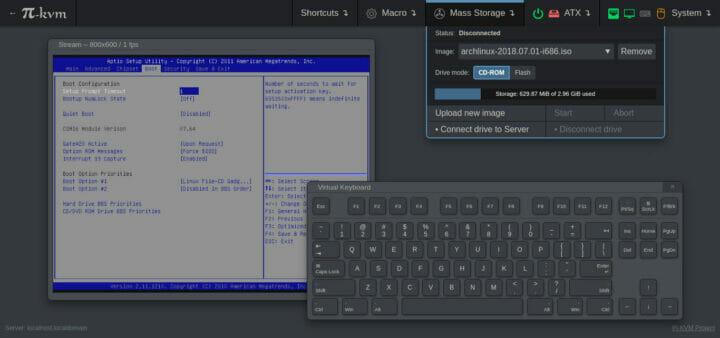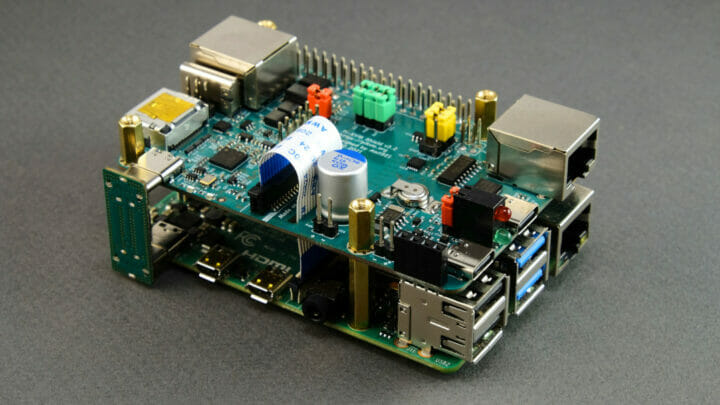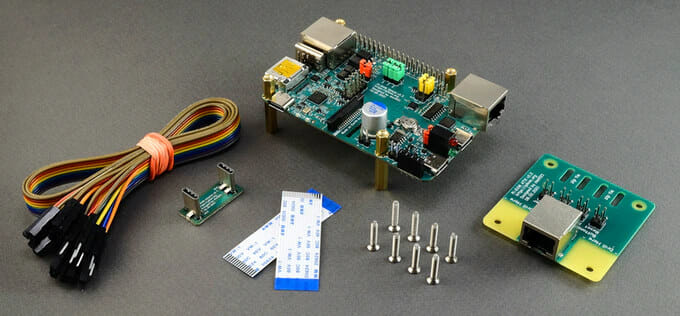Last December, we wrote about the inexpensive DIY Pi-KVM board to add KVM over IP to the Raspberry Pi board mentioning PiKVM v3 was in the works with extra features such as onboard ATX power control.
It turns out PiKVM v3 HAT has been on Kickstarter for about a month and raised close to $600,000 US from over 2,500 backers with just about two days to go at the time of writing.
PiKVM v3 hardware features and specifications:
- Video & audio capture port – 1x HDMI input up to 1080p50
- MIPI CSI-2 interface to Pi to visualize HDMI input
- USB
- 1x USB-C console port
- 1x USB-C power input port
- USB-OTG pins
- USB-C OTG port doing the emulation of a USB keyboard, mouse, Virtual CD-ROM or USB Flash Drive, USB-Ethernet, USB-Serial port, etc…
- Console – RJ45 console port
- Debugging – UART access pins
- Expansion
- SPI and an extra GPIO for the custom extension boards
- I2C display connector
- Misc – Power and activity LED, HDMI reset jumper, Audio capture/GPIO selection jumpers, RTC + rechargeable supercapacitor, PWM fan connector, 1-Wire & Neo-pixel interface
- ATX controller interface (power on/off, reboot control, PWR and HDD ACT LEDs)
- Alternate +5V power input/output header pins
- Dimensions – Raspberry Pi HAT form factor
The Raspberry Pi HAT ships with an ATX controller adapter board and wiring to optionally connect the HAT to the motherboard, a USB-C bridge board to connect the HAT with a Raspberry Pi 4 over USB-C, as well as two flat CSI cables, screws, and brass standoffs. A PKVM OS image based on Arch Linux Arm should be installed on the Raspberry Pi 4 to provide the KVM over IP functionality. You’ll find instructions, other documentation, and GPLv3 licensed software on Github.
Once the connections are done, you’ll be able to control the motherboard or computer connected to the Raspberry Pi 4 over the Internet or local network using VNC or a Web UI. The video output is compressed with MJPEG or H.264/WebRTC up to 1080p 50Hz, and you’ll be able to simulate “insert & eject” for USB devices, turn on and off the motherboard (if the ATX adapter is connected), control GPIO ports and USB relays, access a CISCO-style and USB serial console port (to manage PKVM OS or to connect to the server), etc… It’s also possible to use IPMI BMC, IPMI SoL, Redfish, and Wake-on-LAN to control the server.

Commercial KVM over IP solutions are usually expensive, and one of the reasons PiKVM v3 has been so popular so far is its comparatively low price of just $145 including a steel case. Shipping adds $20 to the US, and $30 to the rest of the world, and backers will not have to wait for too long, as shipping is expected to start in October, a few weeks after the Kickstarter campaign ends. More details may also be found on the official website.
Via LinuxGizmos and Geeky Gadgets

Jean-Luc started CNX Software in 2010 as a part-time endeavor, before quitting his job as a software engineering manager, and starting to write daily news, and reviews full time later in 2011.
Support CNX Software! Donate via cryptocurrencies, become a Patron on Patreon, or purchase goods on Amazon or Aliexpress






